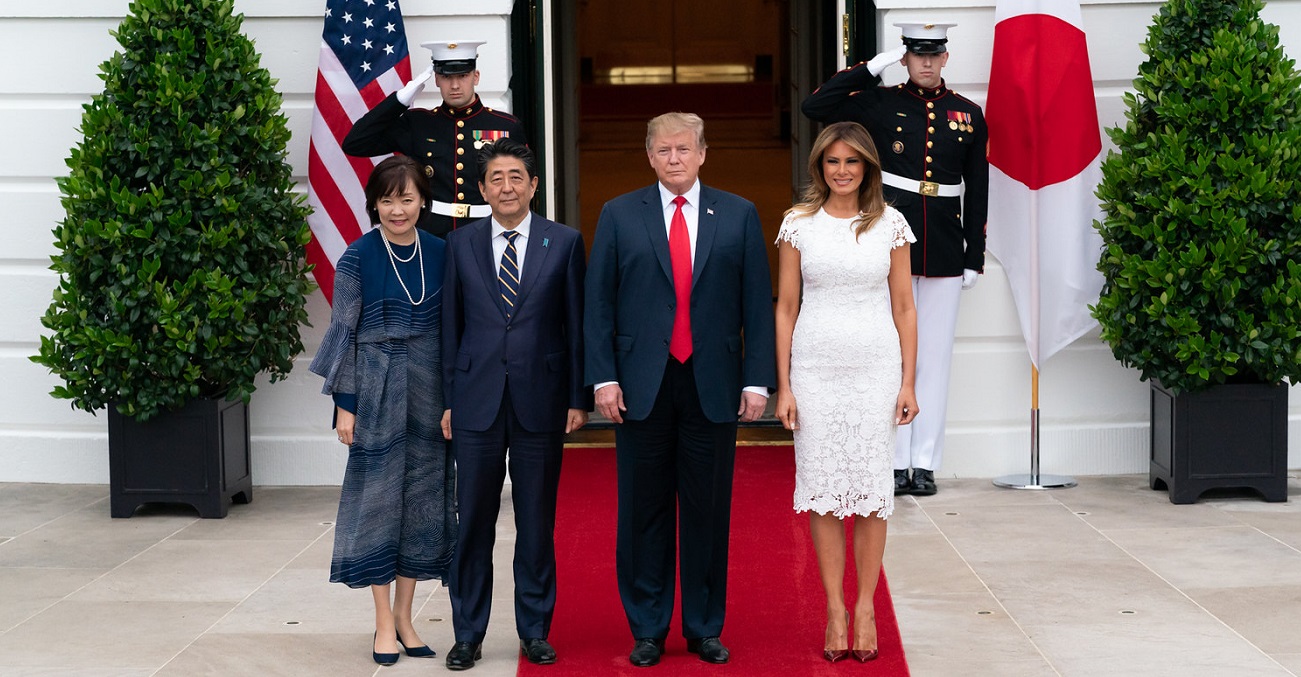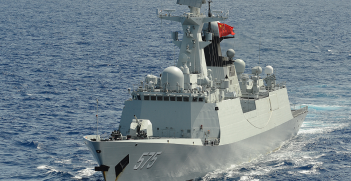The US-Japan Security Treaty at 60

Sino-US strategic competition is intensifying. The US’s great power management strategy will continue to depend on its alliance with Japan to constructively shape China as a responsible power that respects international rules and norms.
As the future of the liberal international order is intensely debated in Washington, China has projected its role in the global system as a “reformist order-shaper.” In the post-war period, America established its military, economic, and technological primacy in the global balance of power underpinned by security alliances, open markets, and multilateral institutions. However, the strategic bargains, universal values, norms, and principles of free trade that defined the US-led order are fragmented today. China’s rise has led to structural shifts and power transition in the system.
Even amidst an unprecedented global pandemic, Chinese maritime behaviour in the key theatres of the Indo-Pacific, including the South and East China Sea, demonstrate Beijing’s determination to take advantage of the tactical opportunity as President Trump remains preoccupied in battling COVID-19. Whether it is shaping the political narrative on the fiercely debated “Wuhan Virus,” or expanding its strategic ambitions through mega designs like the Belt and Road Initiative and emerging institutional statecraft, China remains relentless in its pursuit of shaping a Sino-centric order.
2020 marks 60 years of the US-Japan Treaty of Mutual Cooperation and Security. One of the key questions this anniversary poses is how potent is the alliance in defending the rules-based liberal order? Japan has positioned itself as a stabiliser of the US-led system in pursuit of maintaining a favourable balance of power and order. While China challenges the existing norms and structures, post-war Japan has remained a supporter rather than a challenger of the system. Unlike a “revisionist” China, post-war Japan is largely analysed as a status quo power.
In the post-1945 period, US primacy in East Asia has faced the rise of Japan in 1970s-80s and the rise of China since 2000s. While Washington supported Tokyo’s, and later Beijing’s, integration into the global economic and financial system with the objective of determining their future course within the US-led global order, each country responded differently. The rise of Japan constituted an economic challenge to US primacy, but unlike China, Japan did not translate its economic power into global strategic ambitions. Japan’s grand strategy has remained embedded in its alliance with the US.
However, as China returns to primacy following the “century of humiliation,” it is reshaping global governance by contesting the core elements of the US-led order. For the Chinese Communist Party, the US-led order is unsatisfactory as Washington’s liberalism exports democracy and human rights and the hub-and-spoke alliance architecture rooted in a Cold War mind-set is aimed at containing Beijing.
This alliance is a product of the US’s post-World War II imperative to engineer a favourable strategic order through forward presence and maximise US leverage by containing communism and controlling Tokyo’s integration into the international system. Both Presidents Truman and Eisenhower realised that Japan may aspire to great power status at a later date and hence their objective was to win over Tokyo as an ally so that it could exert influence over its transition into a status quo power supportive of American regional interests. With the promise of US extended deterrence and guaranteed alignment with the “free world,” Japan’s disarmament and pacification was achieved through Article 9 of the Japanese constitution.
Since then, the alliance has served as a public good anchoring strategic stability in the Asia-Pacific. However, the Chinese perception of the alliance has evolved since the post-Cold War era. The narrative has shifted from the alliance being a powerful constraint on Tokyo’s remilitarisation during the 1990s, to the narrative that advanced US-Japan security cooperation compromises Beijing’s national interest in the mid-2000s.
As the terms of the alliance have changed through the Cold War and afterward, Japan has adjusted its role within the alliance framework. However, the alliance is not immune to friction. The alliance dilemma has forced Japan to confront its fear of abandonment and entrapment, as a secondary power reliant on the system leader for its security. With Japan’s economic resurrection, Washington’s discourse pivoted to more equitable distribution of burden sharing, urging Tokyo to spend around three percent of its GNP annually on defence. There are two schools of thought on burden sharing: a straight build-up/specific reciprocity approach and a division of labour/diffused reciprocity approach that acknowledges contributions towards nondefence-related areas such as peacekeeping and strategically oriented development assistance. Military build-up was intensely debated in terms of its implications for regional security in East Asia.
Japan handlers in Washington built bipartisan consensus to urge Tokyo to ease its interpretation of collective self-defence and share responsibilities. Following the Gulf War, challenges in the alliance became more pronounced and the rationale for sustaining it was debated. The 1995 Nye Report argued the strategic rationale of forward presence was fundamental to maintaining US primacy. And with new regional contingencies like the Taiwan Strait crisis, North Korean crisis, and the rise of China, the US-Japan alliance has adapted to the changing security context.
Unilateral Chinese attempts to alter the status quo in the East China Sea through calculated gray zone tactics, consciously keeping tensions in the maritime domain below the level of armed conflict, is one of the key challenges facing the alliance. To keep Indo-Pacific free from coercion with open sea-lanes, Washington and Tokyo have aligned their position within alliance architecture to confront common challenges. Beyond bilateral framework, they are working in robust trilateral and quadrilateral frameworks with Australia and India to address pressing security challenges in the Indo-Pacific. As the regional order becomes fragmented, Japan’s strategy is reflecting internal and external balancing. Some argue that the alliance needs to strengthen its conventional and nuclear capabilities, especially counter-A2/AD capabilities, to avoid strategic miscalculation.
Over the decades, the alliance has added strategic depth with clear division of roles between the Japanese Self-Defence Forces and the US military through Defence Guidelines, reinforcing seamless operational coordination. The alliance’s strategic latitude has expanded with the changing dynamics of warfare and new domains of power projection such as space, cyber, and the electromagnetic spectrum. Under certain circumstances, cyberattacks are considered armed attacks within Article 5 of the Treaty. There is alignment on advanced technologies like 5G and sanitisation standards for data security. With intensifying Sino-US strategic competition and the changing nature of threats emanating from China, from influence operations to global pandemic, the great power management strategy of Washington will continue to depend on its alliance with Tokyo in order to constructively shape Beijing as a responsible power that respects international rules and norms.
Going forward, Washington and Tokyo will have to further fortify the alliance and integrate strategies to preserve the international order. But the alliance has its own challenges, especially under Trump’s America First template. In the near-term, Japan’s negotiating skills will be put to test under the “cost plus 50” model as alliance managers negotiate Host Nation Support in addition to local politics around US base relocation. Separately, a few divergences on the geo-economic verticals need better coordination. Following Trump’s exit from the TPP, Japan took the lead driven by concern that if it abstained from playing a constructive role in shaping the regional trade architecture, China would have an easier path to establishing primacy.
Nevertheless, this time-tested alliance is founded on shared values, strong democracies, robust economies, and potent military capabilities. Japan is one of the best allies US has today and the alliance will continue to serve as the lynchpin of Indo-Pacific security architecture in the coming years.
Dr Titli Basu is an associate fellow at the Manohar Parrikar Institute for Defence Studies and Analyses, India. Her research interests include strategic affairs in East Asia with focus on Japan, and great power competition in the Indo-Pacific. She was a visiting fellow at the National Institute for Defense Studies (NIDS, Tokyo) in 2017.
This article is published under a Creative Commons Licence and may be republished with attribution.





